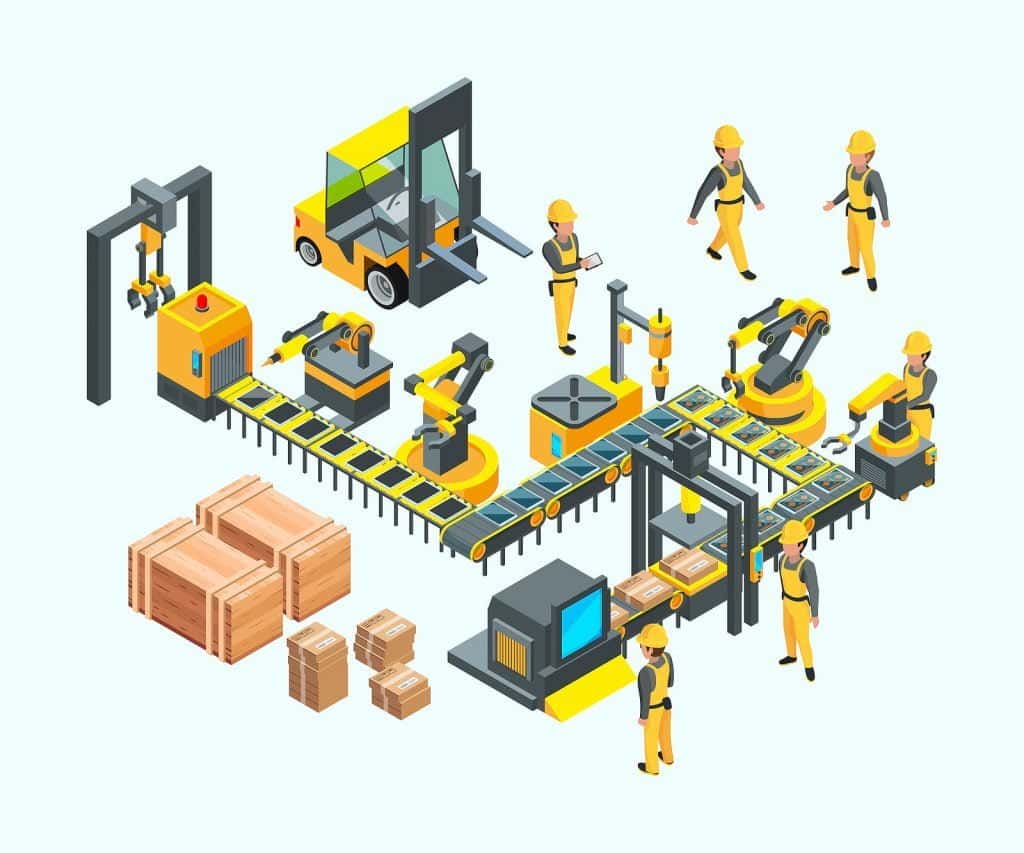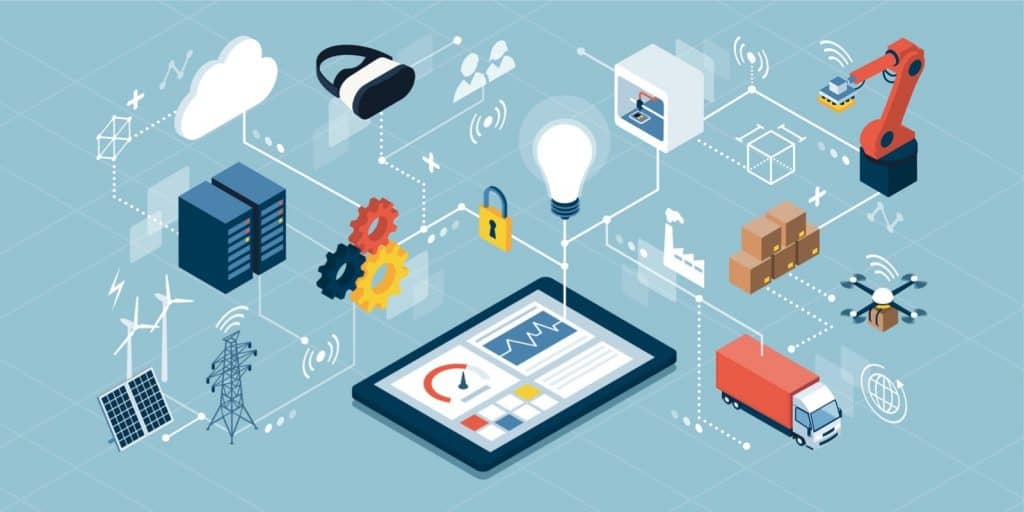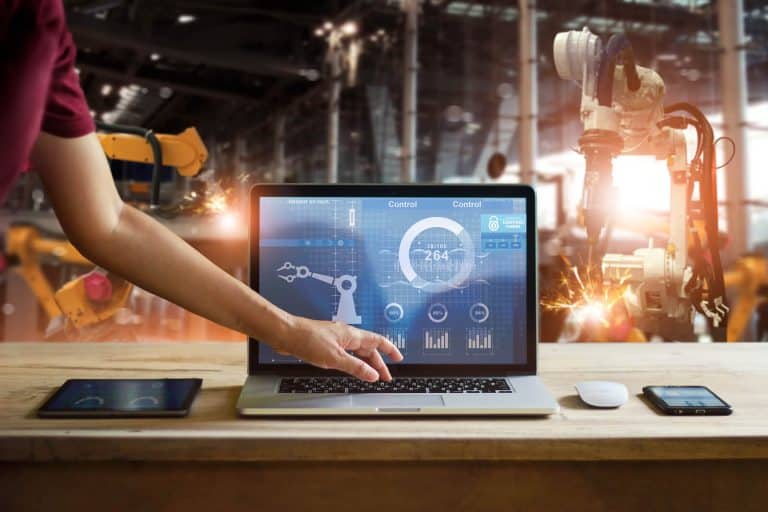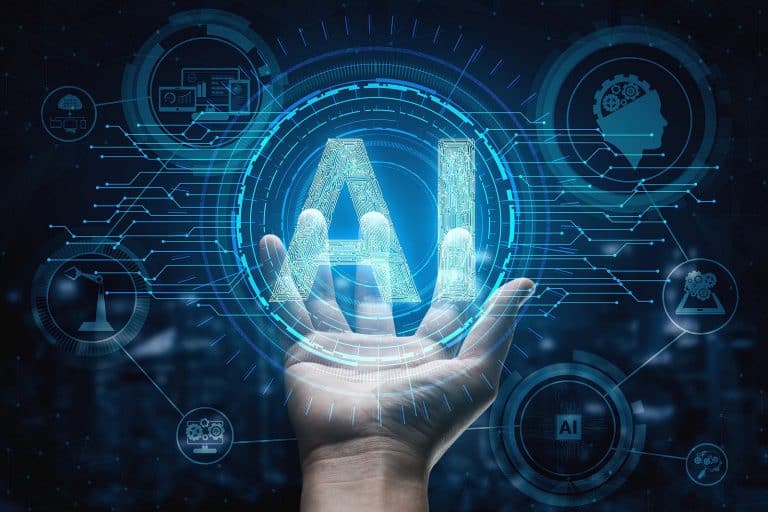Negative Impact of Manufacturing Technology: an overview of the downside to technological advancements.
Table of Contents
ToggleFor organizations looking to reduce costs, eliminate waste within their operation, and enjoy other benefits, manufacturing technology has become a necessity. However, there are two sides to this issue. Just as there are negative effects of technology on business in a general context, there are also specific disadvantages to the deployment of manufacturing technology.
We’ll be looking at some of the drawbacks in this article. First, though, we must consider the benefits that manufacturing technology can bring.
Benefits of Manufacturing Technology
Manufacturing technology consists of a spectrum that ranges from software such as cloud ERP (Enterprise Resource Planning) and computer-aided design (CAD) systems to physical devices like 3D printers and production line robots. Collectively, these technologies can produce many benefits, including the following:
Quality Improvement and the Reduction in Human Error
Manufacturing technology systems typically have configuration options to promote and enforce quality control standards for production and industrial processes. Manufacturing facilities can gain from implementing these settings through a reduction in product defects, production line mishaps, and various other costly inefficiencies.
With systems relying on automation and robotics, human involvement is typically minimized — and with it, the natural human tendency to make mistakes. This is especially true with operations that require continuous repetition or a degree of precision that would tax a human operative.
Cost Reductions
Manufacturing technologies can increase productivity and process efficiency while reducing or even eliminating waste. This translates into savings on materials, time, and resources (if the system is well calibrated and energy-efficient). Enhanced and more efficient production can lead to greater profits for the enterprise.
Reduced Time to Market
The use of manufacturing technology can accelerate production, enabling organizations to get products or components out to market in much less time. With automation and optimized processes dramatically reducing production time between product batches, the business can increase its profits and competitive edge.
Negative Impact of Manufacturing Technology
So much for the benefits. But what of the negative impact of technology in business?
Manufacturing technology presents a number of disadvantages. Chief among them are:
Environmental Degradation due to High-Tech Manufacturing
New manufacturing technologies typically introduce new processes or new materials — and with them, the possibility of new environmental and safety problems. Examples of this already exist.
For instance, the deployment of large-scale smart machinery has allowed oil drilling and mining operations to expand into areas of the environment that were previously protected from such activities, resulting in damage and degradation. Exposure to unusual solvents and rare earth materials by high-tech workers has led to safety concerns. And developments in nanotechnology have resulted in pollution from minuscule plastic particles in the oceans, waterways, and even the human body. The long-term impact of these particles has yet to be fully understood.
Negative Impact of Manufacturing Technology: Security Vulnerabilities
Another of the negative effects of technology is that its deployment can make organizations tempting targets for industrial espionage, intellectual property theft, or sabotage, while at the same time rendering them vulnerable to cybercrime and the activities of hackers.
Networked devices and components of the Internet of Things or IoT are especially vulnerable, as each device in the network potentially provides a different entry point into the system that hackers can take advantage of.
Privacy and Confidentiality Concerns
By collecting data about customer needs and behavior, companies can effectively target their advertising and promotions. However, many consumers consider this kind of record-keeping a violation of their privacy, raising a number of legal issues. Similarly, businesses that use technology to monitor employee behavior and performance face both confidentiality questions and run the risk that this type of surveillance can create a hostile work environment.
Collection and storage of this kind of information also play into the security vulnerability issues concerning workplace technology. Customer records and employee profiles constitute a potential treasure trove for industrial competitors and identity thieves alike.
Negative Impact of Manufacturing Technology: High and Escalating Investment Requirements
One of the bad effects of technology that applies in all sectors is the desire always to have the newest and best gadgets and systems available. Unfortunately, the latest technological innovations are generally the most expensive. So organizations wanting to buy into the cutting edge must be prepared to budget a large amount, to make this possible.

New technologies such as production line robots or the latest digital design and fabrication systems require considerable upfront investment and an investment in skills training or acquisition, management, and maintenance. This level of expenditure first creates a barrier to entry, which may exclude smaller organizations from acquiring technology in the first place. It then establishes a financial commitment level that can inhibit cash-strapped companies from updating their technology further down the line.
Job Losses due to Automation
Much is made of robotics and automation’s ability to perform repetitive tasks and take on jobs that might prove too physically taxing or dangerous for humans to handle. And while it’s true that even in automated systems, people are still employed to handle tasks that the machines cannot manage and tend to the machines themselves, the fact is that automated machines often replace skilled labor.
Human workers must typically set the machine controls in an automated operation, oversee production quality, and perform any maintenance required on the machinery. But as manufacturing automation technology evolves, these workers now require a higher level of training and education than in the past, limiting the number of candidates who can take on these roles.
This has led to a high level of concern over the implications of the expanding use of automation for human labor within manufacturing facilities. Simply put, large-scale automation may create social problems by putting people out of their jobs.
Negative Impact of Manufacturing Technology: Automation may Stifle Human Creativity
Another negative impact of technology related to automation is the lack of freedom that highly automated manufacturing operations give for expressing creativity or real-time adaptations to changing conditions.
Automated machinery is typically only optimized to do exactly as it is told, even if there are issues. And automated production spaces are typically characterized by a lack of human presence. If on the spot decisions affecting critical operations are required, the people who would have to brainstorm solutions to these issues would be absent — and by the time machine configuration tweaks could be implemented, the problem might exacerbate to dangerous levels.
The Problem of Technology Addiction
More broadly, while manufacturing and other technologies can enable companies to benefit from increased productivity in the short term, research suggests that the value derived from the “always-on” employee can be undermined by negative factors such as an increased cognitive load and diminished employee performance and well-being.
According to the American Psychological Association, 53 percent of Americans work over the weekend, 52 percent work outside designated work hours, and 54 percent work even when sick. Flexible working hours, typically viewed as a benefit of technology providing greater freedom, actually leads to more work. And the environmental factors and cultural norms fueling such behavior are increasingly compounded by technological design elements — some intentional, others not — that make technology usage compulsive and habit-forming, taking on the characteristics of an addiction.
FAQ
A: Yes, implementing manufacturing technology often requires significant upfront investment in equipment, software, and training, which can strain business budgets.
A: Yes, the automation and advanced technologies associated with manufacturing can lead to job displacement as certain tasks become automated or require specialized skills.
A: Yes, as manufacturing systems become more interconnected and digitized, there is an increased risk of cyberattacks and data breaches, which can compromise sensitive business information or disrupt operations.
A: Yes, the rapid pace of technological advancements can result in the risk of investments in manufacturing technology becoming obsolete relatively quickly, requiring frequent updates and upgrades to remain competitive.
A: Yes, adopting new manufacturing technology often requires a learning curve for employees, and complex systems may lead to operational challenges and productivity disruptions during the implementation phase.




